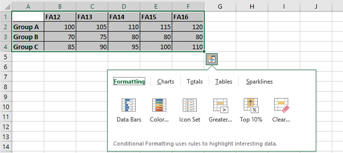


This is very helpful for many different scenarios, from visualizing financial statements to navigating data about population, births and deaths". Waterfall. As explained by Microsoft, "Waterfall charts are ideal for showing how you have arrived at a net value, by breaking down the cumulative effect of positive and negative contributions.Treemap. A treemap chart displays hierarchically structured data. The data appears as rectangles that contain other rectangles. A set of rectangles on the save level in the hierarchy equal a column or an expression. Individual rectangles on the same level equal a category in a column. For example, a rectangle that represents a state may contain other rectangles that represent cities in that state.Word 2016 brings with it some new chart types to help you better illustrate data that you include in your worksheets. Insert Scatter (X,Y) or Bubble Chart. Preview data as a 2-D scatter or bubble chart. You can preview data as a 2-D or 3-D pie or 2-D doughnut chart.

You can preview your data as a 2-D combo clustered column and line chart – or clustered column and stacked area chart. These charts are best when you have mixed data or want to emphasize different types of information. Chart types include Histogram, Pareto, and Box and Whisker charts. Use these charts to show a statistical analysis of your data.

Insert Line or Area Chart. This lets you preview data as a 2-D or 3-D line or area chart. The waterfall chart is used to show how a starting value is affected by a series of positive and negative values, while the stock chart is used to show the trend of a stock's value over time. Use this chart to compare a part to a whole or to show the hierarchy of several columns or categories. Insert Column or Bar Chart. This is the first button, located in the top left corner. With this, you can preview data as a 2-D or 3-D vertical column chart or as a 2-D or 3-D horizontal bar chart. You can use these buttons and their dropdown menus to create these types and styles of charts. We're going to go from left to right, starting at the top left, and cover all the buttons above. To the right of the Recommended Charts button on the ribbon, you'll see this:


 0 kommentar(er)
0 kommentar(er)
